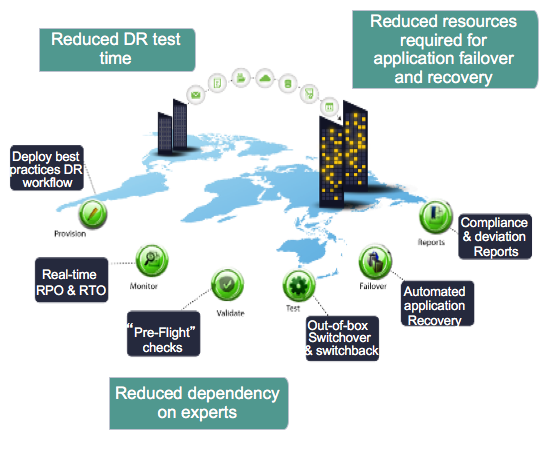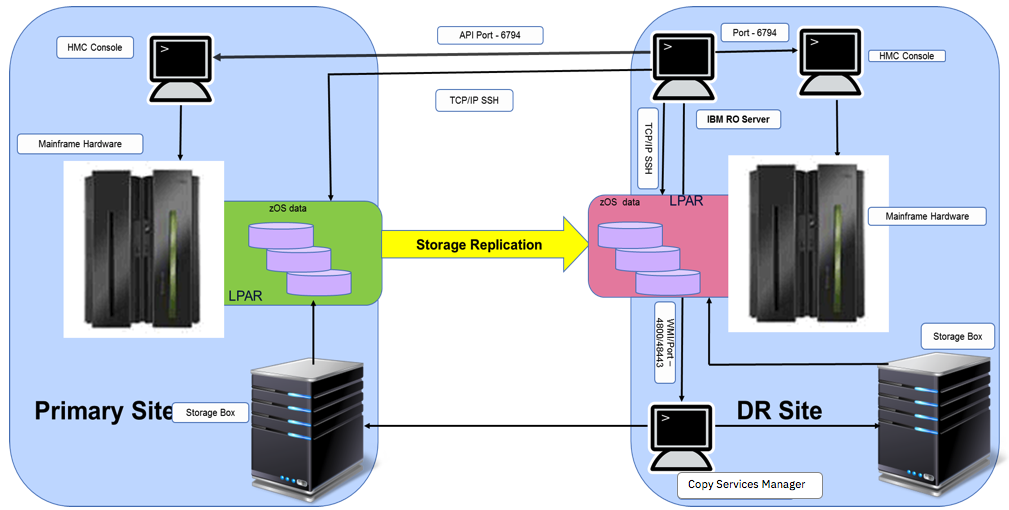Originally posted by: RandyBlea
Are you Ready for a Disaster?

Data is growing at an exponential rate. Data that your business finds critical. So are you ready for a disaster?
IBM Copy Services Manager (CSM) is a product that provides a single place to manage all the replication across your IBM storage environment. CSM manages, monitors and helps simplify the replication of your data across multiple sites and regions of the world, making a consistent copy of your data available should you have to recover remotely in the event of a disaster.
But having the data available is only HALF the battle.
The Three R's of Disaster Recovery...Reduce...Reduce....Reduce
That's not the three R's you're used to hearing is it? But to a business or Storage Administrator, they are critical to a successful disaster recovery plan.
Reduce Disaster Recovery Test Time
When implementing a disaster recovery plan, testing is critical. You need to ensure that if a disaster occurs causing you to switch sites, that you could recover quickly and efficiently without any surprises. Delays in recovery could cost a company millions. But testing your disaster recovery plan can take time and resources. A successful disaster recover strategy not only ensures a quick recovery but reduces the time to test the plan as well.
Reduce Resources required for application failover and recovery
Deploying a disaster recovery strategy takes hardware resources. It does not involve simply the storage you need to hold the copies of your data, but all the components that make up your environment. This includes not only your host servers but servers needed for managing the replicating, testing the disaster recovery strategy and ensuring a successful recovery.
Reduce Dependency on Experts
Hardware resources aren't the only cost to a company. People resources are a huge cost as well. With more and more companies implementing three or four site disaster recovery solutions, a successful disaster recovery solution needs to minimize the dependency on experts. If there are only a few people that understand the full end to end solution then you better hope they're not on vacation when a disaster strikes. Automation becomes critical in reducing the dependency on experts.
IBM Copy Services Manager + Resiliency Orchestration = One Happy Storage Administrator
IBM Copy Services Manager v6 became available in 2015, built on top of Tivoli Productivity Center for Replication Architecture with years of experience managing storage replication environments. CSM provides an easy to use interface for managing and monitoring complex replication helping to reduce costs in disaster recovery strategies.
In 2016, IBM announced the acquisition of Sanovi Technologies. This added Sanovi's orchestration technology to IBM's existing resiliency portfolio thus increasing IBM's ability to help simplify and automate the disaster recovery process, to manage recovery workflows, and reduce recovery time, operating costs, and disaster recovery drill testing time. This became the IBM Resiliency Orchestration product.
At the beginning of this year, in 1Q2018, Resiliency Orchestration v7.2SP2 was released combining the expertise of CSM with the experience of Resiliency Orchestration. In v7.2SP2 Resiliency Orchestration provides zOS LPAR Protection using Copy Services Manager (CSM) supporting the following features:
- Monitoring (Data RPO, RTC, Datalog, Replication)
- Switchover
- Switchback
- Failover Test Exercise
- Failover

With these features, combining both CSM and Resiliency Orchestration can help Reduce....Reduce...Reduce.
Workflows for End to End Automation
IBM Resiliency Orchestration provides Mainframe workflows with its z/CMD Command Processor. Using these workflows you can communicate with your z/OS systems with any of the following methods:
z/OS console commands:
Any z/OS command or JES command can be executed via an "IBM RO" workflow
TSO commands:
Any TSO command can be executed
REXX/CLIST/etc commands
An interface to execute REXX, CLIST or similar process
Batch Job interface:
This interface enables workflows to be able to submit batch jobs and have their output examined for specific condition codes
And the results from the above commands, scripts or job condition codes can all be returned to the Disaster Recovery Management server for additional workflow development/action.
By combining the z/CMD workflows with the replication management of CSM, customers can build and end to end solution for their Disaster Recovery needs!!!

Simplified...Predictable Disaster Recovery
We're talking about the data that your business finds critical to survive. As internal and external requirements lead to more and more complex solutions spanning multiple sites, you need a simplified and predictable disaster recovery plan. Combining CSM and Resiliency Orchestration can give you just that!
And with the security, reliability and scalability of the IBM Z Mainframe, along with the Enterprise class IBM DS8000 family of system storage, you can create a disaster recovery solution that is not only simplified and predictable but helps you to reduce your overall cost of management cost while allowing you rest assured that your data is safe.
It's time to bring You to the power of IBM.
by Randy Blea (Copy Services Manager Architect)
and Robert Lewis (Team Lead System Support IBM Resiliency Services)